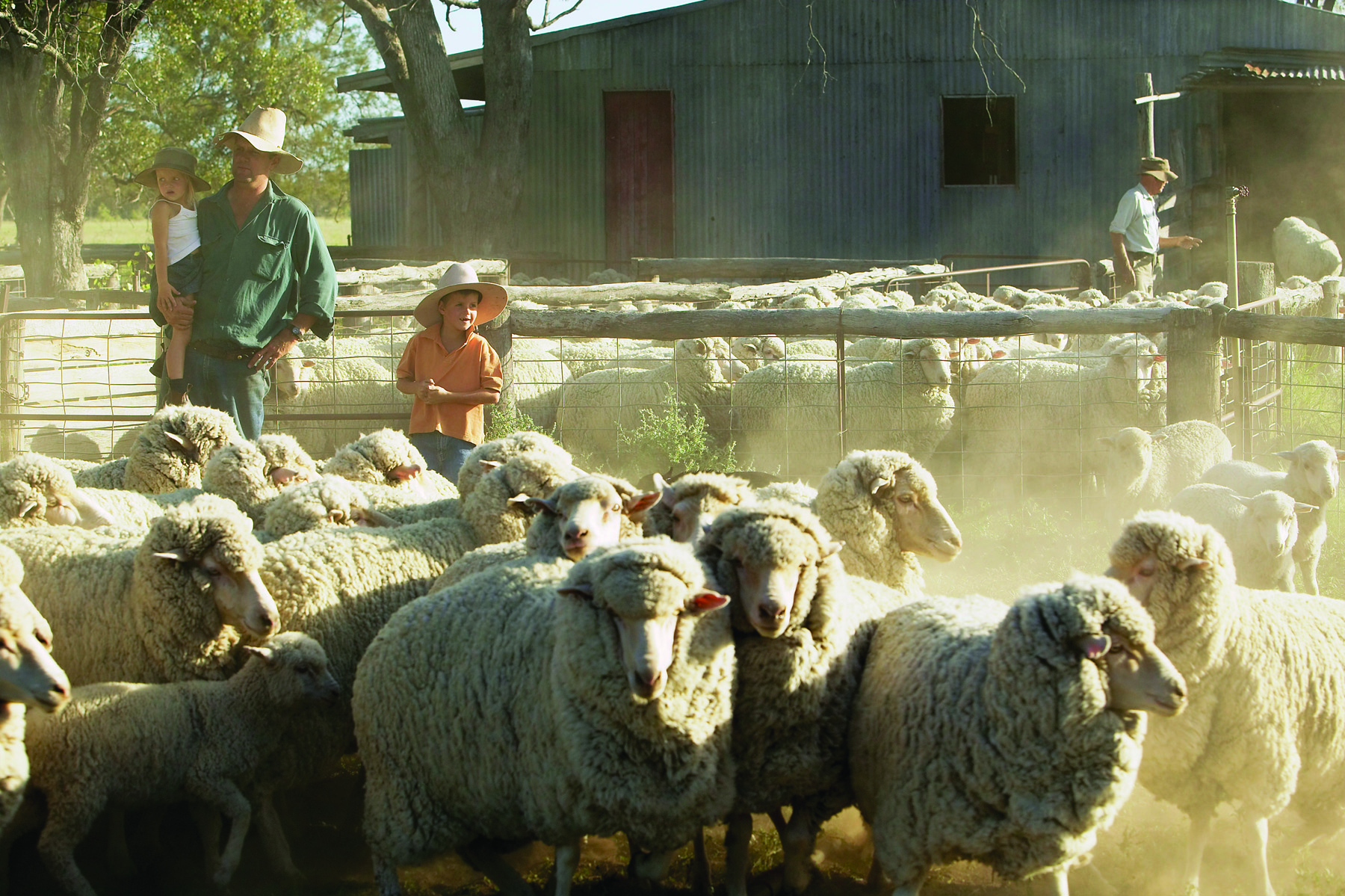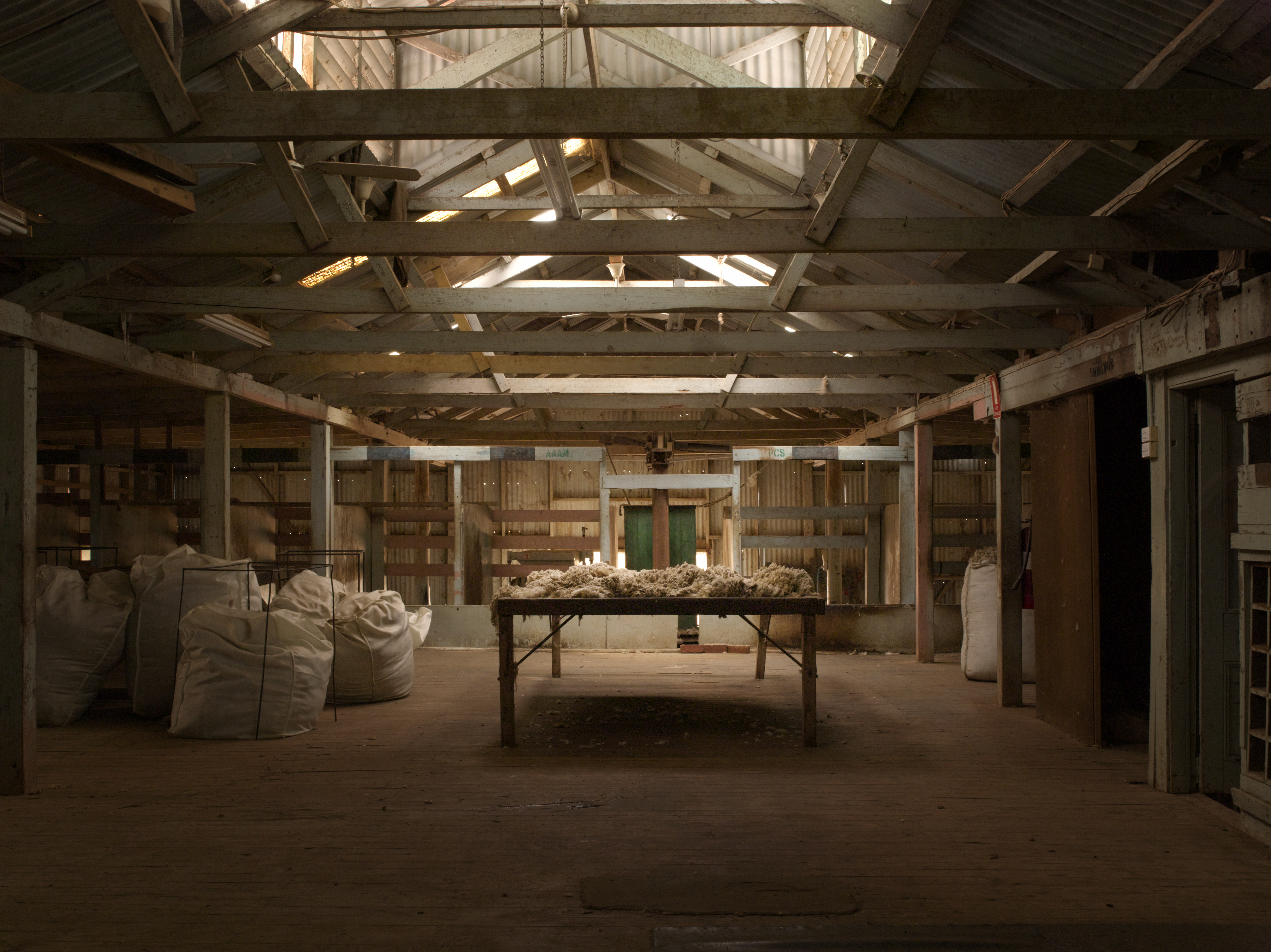A woolgrower’s guide to getting started with carbon and emissions
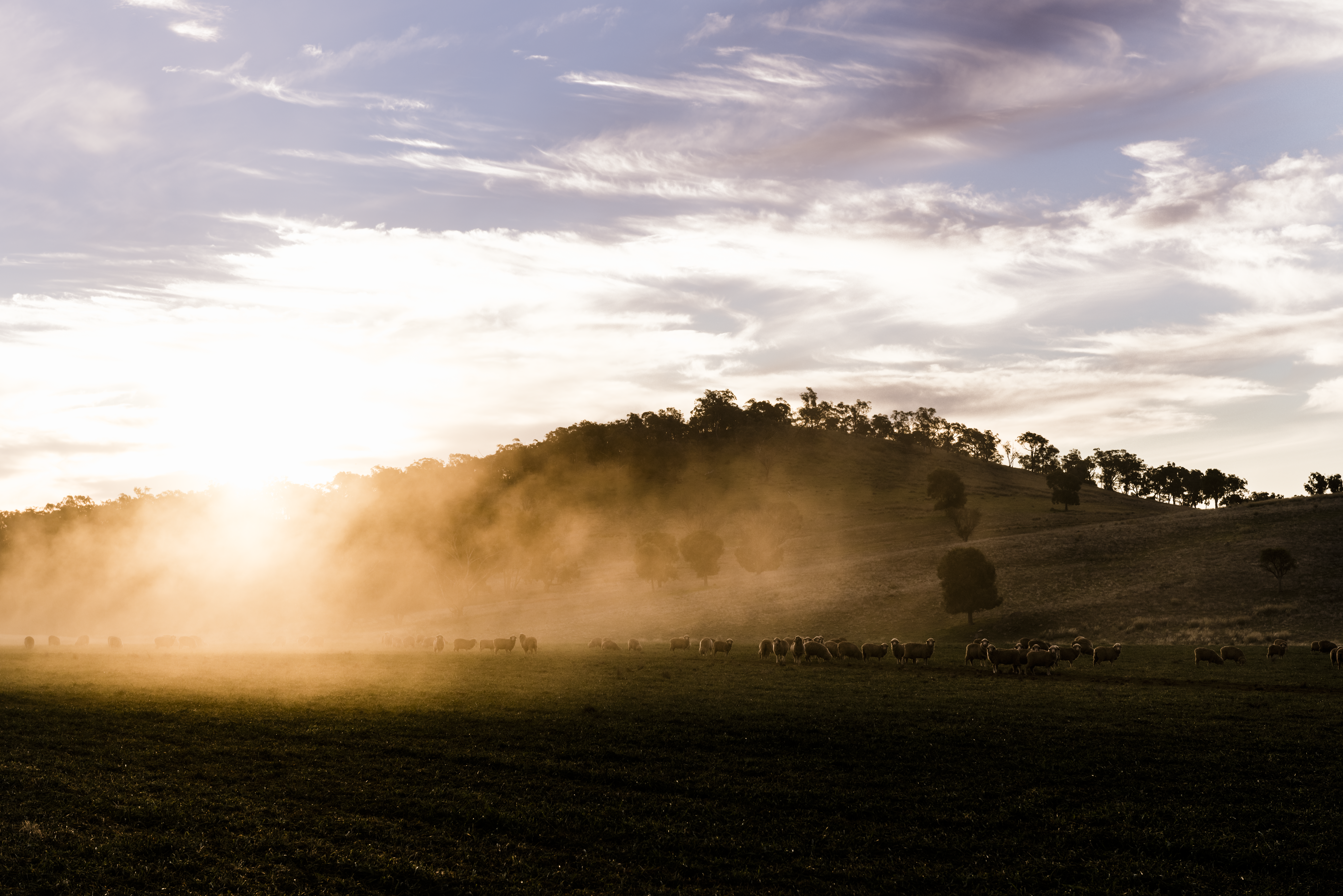
Getting started with carbon and emissions on-farm can boost productivity and future-proof your woolgrowing business. It’s not just about compliance — understanding your emissions helps improve efficiency and profitability. This article breaks down the basics, including where emissions come from, how to measure them using simple tools and what practical steps woolgrowers are already taking to make it work on their farms.
Getting started with carbon and emissions on-farm might feel daunting, but it's fast becoming essential for woolgrowers wanting to stay competitive, profitable and future-ready. A recent AWI Extension WA webinar brought together expert Richard Brake of Richard Brake Consulting and Esperance woolgrower Bruce Pengilly to break it down into clear, practical steps. Their message was clear: understanding your farm’s carbon footprint isn’t just about ticking boxes — it’s about boosting your bottom line and securing long-term success. You can watch the full webinar here.
Why all the fuss about carbon and emissions?
It’s easy to think this is just another government thing, but that’s not the full story. Richard Brake explained during the webinar that the big push for emissions reduction is increasingly coming from multinational companies, banks and even supermarkets. They’re driven by their shareholders and consumers who are demanding more responsible and sustainable investments and products.
- Global signals and supply chain demands - Global frameworks like the United Nations Sustainable Development Goals (SDGs) are now featuring prominently in annual reports of major companies, shaping their "social licence to operate". Brands like Nike, Ralph Lauren and Adidas — along with major retailers like Woolworths and Coles — are committing to sustainability. These companies, plus many more, are all now working with their supply chains, which means you, the farmer, are on their radar
- Financial pressures - Australia’s national target aims for a 43% reduction by 2030 and net zero by 2050. New laws for financial climate reporting kick off in January 2025, initially affecting big players like the major banks, Coles and Woolworths. This will tighten further by July 2027 to include companies with revenues of $50 million or more. Financiers such as Rabobank and NAB, who hold a huge chunk of Australian agri-debt, are already looking to source emissions data from their supply chains. Farm emissions data has value to these companies and woolgrowers need to start collecting this information to be able to be part of the conversation and extract value from it going forward
- Climate reality - Regardless of politics and personal views on what’s causing it, the climate is changing, impacting growing season rainfall and temperatures. Adapting your farming business to these changes is crucial for staying profitable going forward
- Benefits for your farm - Treating carbon and emissions management like any other production decision can lead to financial benefits, increased sustainability, income diversification and even better land utilisation for unproductive areas. Think shelter belts and their co-benefits for livestock systems
Getting your head around your farm's footprint
Emissions fall into three main categories — Scope 1, 2 and 3 — plus any carbon you sequester on-farm. If your sequestration is higher than your emissions, your farm’s footprint is net negative. These emissions are broken down as follows:
- Scope 1 - Direct emissions you control, like diesel use, livestock methane (from burping) and emissions from fertilisers, chemicals and purchased feeds. For most woolgrowers, a massive 60-80% of total emissions fall under Scope 1, meaning you have significant control over them
- Scope 2 - Indirect emissions from purchased energy, mainly electricity used on your farm
- Scope 3 - Indirect emissions that happen upstream (like the production of your fertilisers, chemicals, or purchased feed, or even livestock you buy in) and downstream (like transport to processors or retailers)
Starting your emissions journey with calculators
Don't let the idea of calculating your footprint overwhelm you. As Richard Brake pointed out, you likely already have most of the information needed right at your fingertips.
- Tools of the trade - Richard usually gets his clients to use the Primary Industries Climate Challenges Centre (PICCC) University of Melbourne calculators, which are Excel-based and regularly updated. Another good online option is the AIA Environmental Accounting Platform, which is an online version of the PICCC calculator. Bruce Pengilly started his journey using the PICCC Sheep & Beef GHG Accounting Framework (SB-GAF) tool
- Data inputs - Calculators typically ask for straightforward details like land areas, livestock numbers, weight gains and feed inputs. Bruce shared that obsessing over small details like spot spraying glyphosate or generator electricity makes very little difference to your overall figures. Focus on the big hitters like livestock numbers, body weights and feed inputs. Bruce highly recommends using scales with your sheep handling equipment for more accurate body weights
- Results and focus - The calculators provide outputs that show your emissions by type (e.g., CO2, methane, nitrous oxide) and by scope, often in easy-to-read charts. For many woolgrowers, enteric methane (from burping sheep) is often the largest part of their Scope 1 emissions
- Emission intensity - Instead of just total emissions, focus on emission intensity – for example, kilos of emissions per kilo of live weight turned off or per kilo of wool produced. This allows you to compare your efficiency with others and across different production systems. For sheep meat, the average is around 7 kilos of CO2 equivalent per kilo of live weight, while wool sits around 26 kilos per kilo
A real-world view: Penrose Pastoral's journey
Woolgrower Bruce Pengilly shared his family's experience, which informally started 15 years ago but got serious in 2022 when talk of a carbon tax arose. Being part of MLA’s Carbon Neutral by 2030 (CN30) project (for the agricultural sector as a whole, not just his farm) has been a big help.
Bruce’s key insights:
- Don't panic, just make a start - When you first see that massive chunk representing enteric methane in your pie chart, it can be a bit overwhelming. But as Bruce wisely pointed out, "not everybody's got the answers... the goal posts are always changing." The key is to just start, not wait for 100% accuracy
- Focus on productivity - Many practices that reduce emissions also boost your productivity. "It's not necessarily about the total picture, but how efficient you can be. More bang for your buck." If your soil needs lime, put it on – it'll make you more money and enable you to grow more pastures and better crops, even if it slightly increases total emissions
- Key practices at Penrose Pastoral:
- Gypsum application - This is a top budget priority for them, applying up to 3,000 tonnes a season. It improves soil friability and root penetration, leading to better crop yields even in dry seasons
- Minimum tillage and stubble retention - Bruce says that they haven't burnt their stubbles for years to retain the carbon in the soil
- Legume-based pastures - Multi-species pastures, including vetch and medic, contribute to quicker sheep turn-off (improving intensity) and have shown significant yield benefits for subsequent cereal crops (e.g., 1 tonne/hectare better wheat yield after vetch)
- Improved genetics - Breeding faster-growing and earlier finishing type Merino sheep is a priority of Bruce’s to produce less methane. He also uses Merino rams with better ASBVs for fat and eye muscle helps breed more resilient ewes that can hold condition and produce healthy lambs. Research is even underway to develop ASBVs for feed efficiency and methane production. Bruce would like to use these tools in the future once available
- Containment areas - Since the 2017-2019 dry seasons, they use containment areas to keep sheep off the stubbles (retaining carbon), improving condition scores and facilitating earlier and more targeted feeding, leading to increased lambing percentages (up to 10% increase in the past)
- Soil mapping - Being fully soil mapped allows them to concentrate on improving lesser-performing areas through fencing and tailored management
- Australian Carbon Credit Units (ACCUs): Bruce and his family are planning to do a soil Carbon project in the future. He plans to retain his ACCUs when he has a project, because "everything keeps changing... and if you've sold your carbon credits, they're gone"
Navigating the future
Richard noted that the market is starting to respond with initiatives and pilot programs, to allow farmers to be rewarded for proactively collecting data on and improving their soil carbon levels and emissions intensity. In the dairy sector, some milk buyers are reportedly paying around one cent per litre for emissions data. While a direct price increase for wool due to woolgrowers having certification with The Responsible Wool Standard (RWS) hasn't been widely seen yet, Bruce believes "it's coming", and having an emissions and intensity number will make navigating quality assurance programs much easier. Australian Wool Innovation (AWI) also recently unveiled a new roadmap called Woolmark, which brings together 13 practical initiatives that can be implemented by woolgrowers and brand partners to optimise nature-positive outcomes across the value chain.
Key takeaways for woolgrowers:
- External drivers beyond Government policy are crucial - Emissions reporting is increasingly driven by multinational company commitments (e.g., Prada, Ralph Lauren, Nestle, Fonterra, Woolworths) and financial institutions (e.g., Rabobank, NAB), influenced by investors and new climate reporting laws impacting their supply chains
- Your emissions data has value - Woolgrowers' emissions data is valuable to multinational companies' balance sheets and annual reports. Having this data allows you to control the narrative and may influence future loan pricing or market access
- Don't be overwhelmed, just start calculating - As both Richard and Bruce emphasised, the most important step is to just start. You don't need to be perfect; "close enough is good enough" to begin with and you can refine it over time. Annual calculations are recommended to track changes
- Focus on productivity for emissions reduction - Many practices that reduce emissions also directly lead to increased farm productivity and profitability. Examples include improving genetics, feed efficiency, efficient fertiliser use, multi-species pastures and using containment areas to maintain animal condition and retain carbon
- Emphasise emissions intensity over total emissions - The key focus should be on emission intensity (emissions per unit of product) rather than just total emissions. Practices like applying lime or gypsum, while potentially increasing total emissions, enhance productivity and profitability, which is ultimately more important.
Getting started
Getting started doesn’t mean being perfect — just informed and proactive. Begin with what you know, track your progress and focus on the practices that boost both productivity and sustainability. As Bruce says, "Just give it a crack. It’s not that hard."
It’s not just about reducing emissions — it’s about making your wool enterprise more productive, profitable and future-ready. So, grab a calculator, gather your data and take that first step.
4 Steps to Start Your Carbon Journey (You likely already have the data you need!)
- Pick a calculator - Try the PICCC Excel tool or the AIA online platform
- Gather key data - Livestock numbers and weights, feed inputs and land area
- Focus on emission intensity - Emissions per kg of wool or meat, not just totals
- Make a plan - Choose a few improvement areas and recalculate annually
For more information, check out the following:
- Making cent$ of carbon and emissions webinar - AWI Extension WA
- Carbon and emissions article - AWI Extension WA article
Georgia Pugh, AWI Extension WA




.png/Zz0yM2JiZjM5ODBlYmMxMWYwOTU5YTYyNTc0YTA0ZjBjZQ==)
